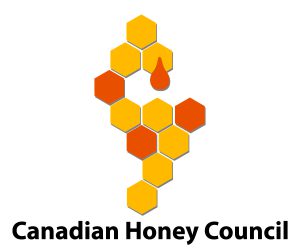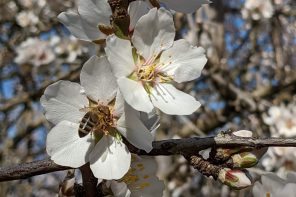By: Rod Scarlett
For context…
As most of you hopefully know, the potential of another parasitic mite of honey bees, the Tropilaelaps mite that is spreading globally, will at some point enter North America.
There are concerns from the American Honey Producers Association (AHPA) and the American Beekeeping Federation (ABF) of this mite and additional honey bee health decline in the U.S. These concerns are based on the importation of package bees from countries outside of North America into Canada to replace losses. These countries, because of location, have more of a potential of Tropilaelaps accidental introduction into them. U.S. imports of package bees into Canada, currently restricted, does not have significant pest, parasite or disease issues that are different than Canada, according to AHPA and ABF.
The statement below from the Canadian Honey Council addresses this situation.
Jerry Hayes
From the CHC…
It is indeed unfortunate that the American Beekeeping Federation, the American Honey Producers Association and those Canadian operators having an interest in importing American packaged bees are attempting to capitalize on the fear of introducing Tropilaelaps mites.
The Canadian Honey Council would much have preferred if the ABF and the AHPA had first contacted the CHC for information regarding status, demand and possible rationale for border opening. The CHC would have appreciated nothing more than to add to a substantive history of working together in a mutually beneficial manner. As it is, the CHC feels it necessary to clarify some issues concerning Canada’s permitted importation of package bees, particularly from Australia as well as the threat of the introduction of Tropilaelaps mites. With respect, the two issues should have been dealt with separately, but they have unfortunately been intertwined.
The CHC represents every provincial beekeeping organization in Canada and as such, speaks for all beekeepers. The package issue in Canada is divisive, but it is important to note that the interest group calling for the opening of the U.S. border does not represent all commercial operations nor is it even clear they represent a majority of commercial operations. They do, however represent a substantial number of colonies in certain regions of the country and we continue to listen to those from all points of view.
The CHC and the ABF have had a good working relationship. More recently, we have expanded our relationship building to work closer with the American Honey Producers Association. While honey sales, adulterated honey and trans-shipped honey has been a primary concern, stock issues, particularly related to queen sales has also been important. Working with California queen producers, the Canadian Honey Council was able to ease some of their reporting burdens and when “Africanized bees” were found in the quarantine zone, we were quickly able to work with the Canadian Food Inspection Agency based on science and agreed to developed strategies to mitigate the issue. Consequently, imports were resumed in a timely manner.
Last year, Canadian beekeepers from most areas in the country experienced devastating losses and the demand for stock increased dramatically. Calls to open the border to U.S. packages intensified, firstly focusing on receiving packages from the northern California quarantine zone, then expanding to Georgia and now the mainland U.S. The Canadian Food Inspection Agency put out an open call for additional research to see if there were any changes to the risks that had been identified in a 2013 risk assessment of U.S. packages. Four risks were identified in 2013:
- Amitraz resistant mites
- Small hive beetle
- AFB resistance
- Africanized bees
The CHC has indicated that if the science supports the decision to open the border, the border should open. However, it is not up to beekeepers or associations to determine if the science is sound, it is up to the experts at CFIA that evaluate the honey bee health status in Canada and the potential bee exporting country. For example, there have been assertions by some Canadian beekeepers that there is amitraz resistance in Canada. Certainly, some “preliminary” work has been done and it suggests that there may be limited emerging resistance in some operations, but no conclusive or scientific evidence has been produced. Moreover, the African bees, AFB resistance and the small hive beetle are issues that must be addressed and mitigated to acceptable levels of risks to the CFIA and Canadian beekeepers.
Table 1
| Year | # of Packages | Total # of Colonies | Year | # of Packages | Total # of Colonies |
|---|---|---|---|---|---|
| 2008 | 11,070 | 570,070 | 2016 | 44,997 | 767,683 |
| 2009 | 11,360 | 592,120 | 2017 | 27,387 | 790,668 |
| 2010 | 10,622 | 620,291 | 2018 | 31,638 | 790,023 |
| 2011 | 42,466 | 637,920 | 2019 | 41,339 | 791,051 |
| 2012 | 33,913 | 690,037 | 2020 | 13,746 | 764,616 |
| 2013 | 65,066 | 667,397 | 2021 | 8,661 | 834,262 |
| 2014 | 52,774 | 696,252 | 2022 | 56,737 | 764,828 |
| 2015 | 55,786 | 726,008 | 2023 | TBD |
It may very well be that CFIA decides that a new risk assessment should be conducted, but it will be because of scientific reasons, not political or economic reasons. As for package bees imported to Canada, Table 1 shows the historic numbers.
For many operations, they are producing their own stock and as COVID-19 restrictions proved, domestic production and domestic sustainability are goals we in Canada need to work towards.
For some reason, the Canadians wishing to import U.S. packages decided to introduce the threat of Tropilaelaps entering the USA from Canada. Last year, about 38,000 packages came into Canada from Australia. Where does Canada get its package bees from in Australia? Australian package bees come from regions of the continent that are isolated by unpassable physical barriers to bees or the human trafficking of bees (4000 km of desert and the Tasman Sea – its 1,000 km by sea from Sydney to Hobart). There is no Tropilaelaps in Australia. In addition, New Zealand is just as close or closer to where Tropilaelaps is found and it is important to note that the U.S. can import bees from New Zealand (https://www.aphis.usda.gov/aphis/ourfocus/planthealth/import-information/permits/plant-pests/bees/honeybees-other).
A North American concern is justified, but it is far more likely that the mite will arrive by ocean liners than it will by packaged bees. The U.S. has 162 ocean freighters arriving every day and many of those are from China and Japan, two countries much more likely to have unwanted “visitors” aboard. That is why calls in the USA for sentinel hives at port have increased. Canada needs to step up as well, but by eliminating the countries we currently import packages and replacing them by U.S. packages is not the answer unless the science warrants it. We need not confuse the opening of the border to packages from the U.S. with closing the border for all other imports. This is not a trade issue, it is always looked at as an animal health risk issue. Even those Canadian commercial operators who want to see the border open should be wary of putting all our eggs in one basket.
Rod Scarlett – Executive Director, Canadian Honey Council









